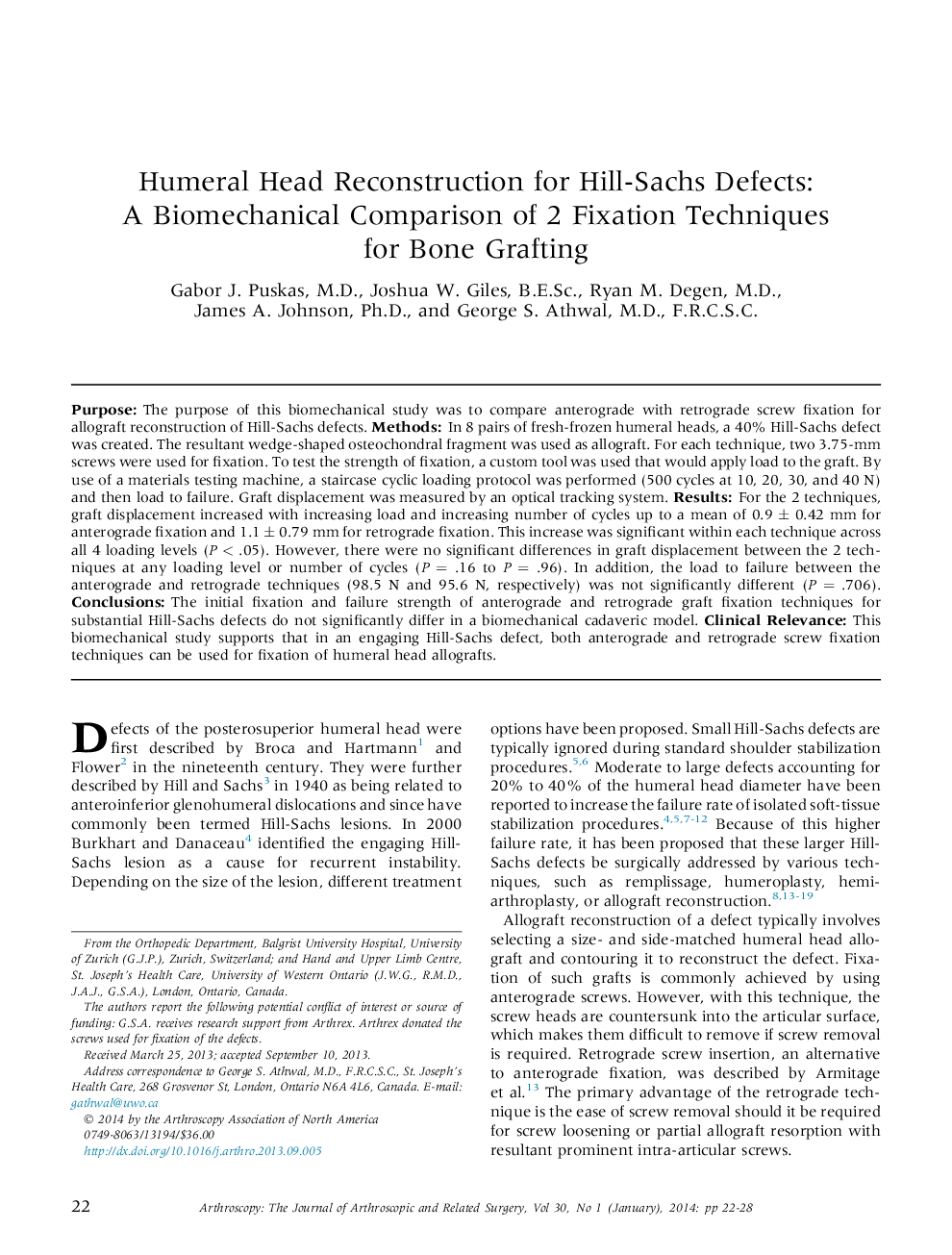| Article ID | Journal | Published Year | Pages | File Type |
|---|---|---|---|---|
| 4043372 | Arthroscopy: The Journal of Arthroscopic & Related Surgery | 2014 | 7 Pages |
PurposeThe purpose of this biomechanical study was to compare anterograde with retrograde screw fixation for allograft reconstruction of Hill-Sachs defects.MethodsIn 8 pairs of fresh-frozen humeral heads, a 40% Hill-Sachs defect was created. The resultant wedge-shaped osteochondral fragment was used as allograft. For each technique, two 3.75-mm screws were used for fixation. To test the strength of fixation, a custom tool was used that would apply load to the graft. By use of a materials testing machine, a staircase cyclic loading protocol was performed (500 cycles at 10, 20, 30, and 40 N) and then load to failure. Graft displacement was measured by an optical tracking system.ResultsFor the 2 techniques, graft displacement increased with increasing load and increasing number of cycles up to a mean of 0.9 ± 0.42 mm for anterograde fixation and 1.1 ± 0.79 mm for retrograde fixation. This increase was significant within each technique across all 4 loading levels (P < .05). However, there were no significant differences in graft displacement between the 2 techniques at any loading level or number of cycles (P = .16 to P = .96). In addition, the load to failure between the anterograde and retrograde techniques (98.5 N and 95.6 N, respectively) was not significantly different (P = .706).ConclusionsThe initial fixation and failure strength of anterograde and retrograde graft fixation techniques for substantial Hill-Sachs defects do not significantly differ in a biomechanical cadaveric model.Clinical RelevanceThis biomechanical study supports that in an engaging Hill-Sachs defect, both anterograde and retrograde screw fixation techniques can be used for fixation of humeral head allografts.
